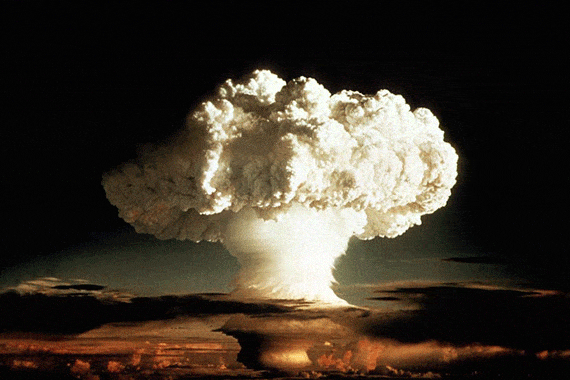The United States detonates the world’s first thermonuclear weapon, the hydrogen bomb, on Eniwetok atoll in the Pacific.
The test gave the United States a short-lived advantage in the nuclear arms race with the Soviet Union.
Following the successful Soviet detonation of an atomic device in September 1949, the United States accelerated its program to develop the next stage in atomic weaponry, a thermonuclear bomb. Popularly known as the hydrogen bomb, this new weapon was approximately 1,000 times more powerful than conventional nuclear devices. Opponents of development of the hydrogen bomb included J. Robert Oppenheimer, one of the fathers of the atomic bomb. He and others argued that little would be accomplished except the speeding up of the arms race, since it was assumed that the Soviets would quickly follow suit.
The opponents were correct in their assumptions. The Soviet Union exploded a thermonuclear device the following year and by the late 1970s, seven nations had constructed hydrogen bombs.
The nuclear arms race had taken a fearful step forward.


